|
By Rene Bonsubre,Jr
WBO number one flyweight contender Giemel Magramo (24-1,20KO’s) of the Philippines and WBO number three Junto Nakatani (20-0,15KO’s) of Japan were supposed to square off last April for the vacant WBO world flyweight crown. But the match-up got postponed many times due to the ongoing coronavirus pandemic. Magramo remained in high spirits and continued to train. When the go signal was given to travel to Japan, he was ready. “My training in the Philippines went well,” Magramo told this writer in a short chat, “We are now in Japan, but we have to quarantine. I am continuing to train inside the hotel.” This bout is for the title vacated by Japan’s Kosei Tanaka last February. “I’m happy to finally get a title shot. I won’t give any predictions. But this is an opportunity to prove myself. I am praying to God for success.” Magramo stated. Magramo was also in a disheartening situation last year. He was penned to face Thailand’s Eaktawan Krungthepthonburi on September 7 in an IBF eliminator with the winner set to be the next challenger of IBF flyweight champion Moruti Mthalane of South Africa. But, the Thai boxer was reported to have food poisoning and Magramo had to face substitute Richard Claveras and stopped him in three rounds. This however, did not lead to the title shot he had hoped for. Nakatani also had his share of frustration. It was reported by asianboxing last March 18 that he left his training camp in the United States due to the increasing number of COVID-19 cases. Nakatani has had cancel sparring with Luis Nery and returned to Japan. Nakatani’s last two victims were Filipinos – Philip Luis Cuerdo who was knocked out in round one and former IBF world junior flyweight champ Milan Melindo, who was stopped in six. The 22 year old Japanese turned pro in 2015. He also beat three other Filipino boxers, Dexter Alimento,Jeronil Borres and Joel Taduran. The 26 year old Magramo turned pro in 2012. His only career loss was by unanimous decision to Pakistani Muhammad Waseem in Seoul, South Korea. Magramo’s biggest road win was against the previously undefeated Chinese Wenfeng Ge in Suzhou,China. The fight was stopped at the end of the tenth when Ge suffered an eye injury. File photo- Giemel Magramo in Suzhou,China last year.
0 Comments
By Rene Bonsubre,Jr
The ending was not exactly a surprise. Ghana’s Duke Micah was not ready for a fighter with the experience and skill level of the WBO world bantamweight champion, John Riel Casimero. But, Casimero’s victory was badly needed in his home country, the Philippines. With the total number of coronavirus cases soaring past 300 thousand, and the nation enduring various stages of quarantine since March, plus millions of Filipinos who lost their jobs both locally and abroad, there was little to be thankful for. Casimero himself had to endure a long wait. Underneath the confident façade, you can sense his bottled-up anger and frustration. Casimero has been in the United States since February, waiting and training for the unification fight against Japanese Naoya Inoue. But, when the coronavirus pandemic struck, boxing’s scheduled big fights went down as well. Casimero started fast, launching a two-fisted offense that had Micah reeling from the opening round. A furious flurry sent Micah in round two, he bravely got up, but the ring doctor and the referee had to check on him before he was allowed to enter the third round. But Casimero delivered the coup de grace in the form of a left hook and right uppercut combo and the WBO belt remained in his hands. The fight was held at the Mohegan Sun Casino in Connecticut. Casimero is now 30-4,21KO’s while Micah suffered his first loss and drops to 24-1,19KO’s. The Filipino boxing community celebrated. The last time a Filipino was involved in a world title bout abroad was in February, when Jeo Santisima lost to Mexican Emanuel Navarrete by eleventh round TKO in a WBO world junior featherweight title bout in Las Vegas. Manny Pacquiao, the country’s top boxing gun, is currently concentrating on his duties as senator amidst the pandemic and will not see action in 2020. Boxing in the Philippines has been halted since March but could resume in October. There are clouds of uncertainty and anxiety over the Philippine archipelago. Casimero’s win was a welcome ray of sunshine. The 31 year old Casimero was offered last April a defense against erstwhile WBO number one ranked contender,American Joshua Greer. But Casimero and his camp chose to wait for Inoue (19-0,16KO’S). The undefeated Japanese star will defend his WBA/IBF belts against Australian Jason Moloney (21-1,18KO’s) on October 31 in Las Vegas. Will a Casimero-Inoue happen in 2021? Photo-JohnRiel Casimero Contribution from freelance writer Jackie
On 9 May 2018, Muhammad Ali made history after becoming the first UK boxer with Type 1 diabetes to be granted a professional boxing license. Later that year, on 15 September, he entered the ring for the first professional fight of what has proven to be a very successful boxing career. This was a huge win for the fiercely-competitive Ali who initially had his application for a professional license rejected in 2015 due to his diagnosis. For his first pro fight, Ali came up against Lithuanian boxer Andrej Cepur, who he defeated by 40 to 36 points after four rounds. In December 2019 the undefeated Ali, who is affectionately known as ‘The Diabetic Kid’ won his sixth fight as a boxing pro, this time against Nathan Hardy at the University of Bolton Stadium. The diagnoses came at a young age Ali was only about 5 years old when he received his Type 1 diabetes diagnosis. Type 1 diabetes only affects approximately 8% of everyone living with the condition, making it considerably less prevalent than Type 2 diabetes. Ali started boxing at the age of 12 and by the time Ali was 16 years old, Ali began administering his own insulin. Today, he injects himself multiple times a day as a pump would not be a viable solution due to the risk of it getting damaged during training or a fight. He also makes use of a flash glucose monitor to monitor his condition. During his first fight, the British Boxing Board of Control (BBBC) insisted that he wore not one but two flash glucose monitors as proof that his glucose levels and subsequent health were not at risk during the fight. A healthy lifestyle is imperative Despite living with diabetes for more than 20 years, Ali has not relaxed his efforts to remain fit and healthy. Individuals living with diabetes face a unique set of challenges on a daily basis that need to be navigated. Following the correct diet is imperative for any diabetes patient. Ali eats fresh, home-cooked meals which he prepared himself and takes extra care to weigh his portions to know exactly how much insulin he will require. As a sportsman, it is also essential to take care of his feet, ensuring that his shoes do not cause any skin abrasions that can have devastating consequences for someone with diabetes. Diabetic neuropathy can be extremely painful but can, thankfully, be largely prevented through effective diabetic care. Diabetes won’t determine his boxing future When Ali received the news in 2015 that his application for a pro license was declined, he was devastated, stating that he felt both ‘discriminated against and alienated’. He realized he had to make a difficult choice. He could either accept the Board’s decision or he could fight it. The former was never an option as Ali realized that his diagnosis did not have to stand in the way of his boxing dreams. Together with his team, who included trainer Ale Matvienko, manager Asad Shamim, and his endocrinologist Dr. Ian Gallen, Ali provided all the documentation required to prove that his diabetes would not affect his boxing ability and vice versa. With that amount of dedication, the future looks very bright for The Diabetic Kid. Diabetes affects people from all walks of life, including those who go on to become some of the biggest stars in sporting history. As long as every effort is made to stay healthy, no diabetes diagnosis needs to stand between you and your dreams. By Rene Bonsubre,Jr
For the past twenty-four hours, the biggest boxing news (the biggest disappointment actually) here in the Philippines was that WBO bantamweight world champ John Riel Casimero (29-4,20KO’s) will not be facing WBA/IBF champion Naoya Inoue (19-0,16KO’s) in his next fight. Several publications have now reported that Casimero will be defending his title against Duke Micah (24-0,19KO’s) of Ghana on September 26 in Connecticut. Casimero,who hails from the island of Leyte in the Philippines, has been in the United States since February. Fans have been salivating over the unification fight against Inoue since January. But, when the Covid19 pandemic struck, boxing went down as well. The sport may be back, but coronavirus precautions has KO’d the possibility of huge stadium bouts.Casimerowas offered last April a defense against erstwhile WBO number one ranked contender, American Joshua Greer. But Casimero and his camp opted to wait for Inoue. Casimero told this writer at that point in time that he wanted Inoue, and no one else. He continued his social media posts of “monster hunting”taunts against Inoue, whose ring moniker is “Monster”. Greer would suffer an upset loss against Casimero’s countryman, MikePlania, while Casimero continued to wait. Micah’s last five bouts were held in the U.S.He competed as a flyweight in the 2012 Olympics but lost in his second bout to Michael Conlan. In his pro career, he has captured WBO Africa, British Commonwealth and WBC International belts. He has beaten boxers with decent records but nowhere near the level of competition that the three-division champion Casimero has toppled - names like Luis Alberto Lazarte, Pedro Guevara, AmnatRuenroeng, Charlie Edwards and ZolaniTete. Photo- John Riel Casimero By Rene Bonsubre Jr.
Filipino southpaw Joe Noynay (18-2-2,7KO’s) is just one of many boxers whose career got stalled due to the Covid-19 pandemic. The reigning WBO Asia Pacific junior lightweight titleholder has not fought since December, a fight that ended in a technical draw against Kenichi Ogawa in Tokyo. But that may soon change. Noynay announced on social media yesterday that he received an invite from Top Rank,together with another Filipino boxer,Roldan Aldea. The story was immediately picked up by our friends at Powcast sports and Realfight.ph. “I need to fight and earn money.” Noynay said, “Not having any fights is burning a hole in my pocket.” He told this writer that he had no problems with his training even when the country was in lockdown. He will have to get a visa though but he is raring to fight again. Getting visas and travelling overseas is still a hassle during this pandemic. Noynay hails from Bogo,Cebu; a small city known in Philippine boxing as the birthplace of the great Hall of Famer Gabriel “Flash” Elorde. Noynay was one of the Cebu based boxers who were given a citation during the 37th San Miguel Beer (SMB) - Sportswriters Association of Cebu (SAC) Cebu Sports Awards last February. Prior to the draw against Ogawa, Noynay had an impressive 2019. He stopped Japanese Kosuke Saka in two rounds in April and London Olympics bronze medalist Satoshi Shimizu in July. Both fights were also held in Japan. Photo-Joe Noynay victorious in Japan By Rene Bonsubre,Jr
As the coronavirus pandemic rages on, a few sporting disciplines have returned to offer fans a welcome distraction. Unfortunately for fight fans in the Philippines, boxing has been put on ice. A few Filipino boxers who were already in the United States before travel restrictions were tightened have gotten fights and the lone win that stands out was Mike Plania’s upset over erstwhile WBO number one bantamweight Joshua Greer in Las Vegas last June 16. But for the reigning Filipino world champions, the wait for ring action has been really tough. IBF junior bantamweight champion Jerwin Ancajas (32-1-2,22KO’s) has not defended since December, an easy fight against Chilean Miguel Gonzalez in Mexico. This would have been a problem for most fighters but Ancajas’ manager Joven Jimenez said the champ is in shape. “He has continued to train. In fact we cautioned him about overtraining.” Jimenez told this writer, “He even continues to spar.” Jimenez is hoping visa restrictions will ease for them to travel to the United States by August. He thinks the defense against Jonathan Javier Rodriguez (21-1,15KO’s) of Mexico will happen. Rodriguez was supposed to fight Ancajas last November. Jimenez also mentioned Top Rank’s plan for a unification against WBA titleholder Joshua Franco (17-1-2,8KO’s) of the U.S. Franco beat Australian Andrew Moloney for the “regular” WBA world title belt last June 23 by unanimous decision in Las Vegas. The WBA “super” champion is Nicaraguan Roman Gonzalez. Ancajas has been quoted that he is even open to fighting former four division champion Donnie Nietes. Jimenez said he has not received any formal notice about it.Nietes has not fought since vacating the WBO junior bantamweight title in 2019 and has been inactive for almost nineteen months. Other Filipino champions continuing their long anticipation are IBF world minimumweight champion Pedro Taduran (14-2-1,11KO’s), WBO bantamweight king John Riel Casimero (29-4,20KO’s) and WBA “super” world welterweight champ Manny Pacquiao (62-7-2,39KO’s). Casimero is still in the U.S. but his unification with IBF/WBA champ Naoya Inoue of Japan is on hold. Casimero has not seen action since dethroning South African Zolani Tete last November in the U.K. The 41 year old Pacquiao has not had a fight for almost a full year. He is also an incumbent Senator in the Philippines. Taduran is the only Filipino world champion who made a defense in 2020. Last February, he fought Mexican Daniel Valladares to a technical draw in the challenger’s home turf. It is also worth mentioning that one of the last fight cards held in the Philippines before contact sports was shut down was the World Boxing Foundation (WBF) minimumweight title fight between fellow Filipinos ArAr Andales and Rey Caitom. Andales (11-2,3KO’s) won by KO in round five to win the vacant title in Cebu City. Photo- Joven Jimenez and Jerwin Ancajas (right) By Rene Bonsubre,Jr
News of the WBO world title fight between Filipino Giemel Magramo (24-1,20KO’s) and Junto Nakatani (20-0,15KO’s) of Japan came as ray of hope in an otherwise gloomy sports landscape in the Philippines. This fight is for the flyweight crown vacated by Japan’s Kosei Tanaka last February and was initially set for April 4 in Tokyo. Magramo told this writer in a short chat last March that he was told he could be fighting on June 6 and he was continuing to train at the Elorde Gym. But, the dire situation worldwide caused by the coronavirus pandemic continues. Now,it seems the fight will take place in Tokyo’s Korakuen Hall on July 4. Arrangements for the fight, as well as the safety protocols are among the concerns of Magramo’s manager Johnny Elorde, Japanese promoter Akihiko Honda, Games and Amusements Board (GAB) chairman Baham Mitra ,WBO Asia Pacific chairman Leon Panoncillo,and Tsuyoshi Yasukochi of the Japan Boxing Commission (JBC). Travelling to Japan will be a huge problem at this time but boxing stakeholders and fans hope things will get better come July. WBO Vice President Panoncillo made this writer aware last Tuesday of the safety guidelines of the World Boxing Organization for sanction approval which include: 1.Only critical personnel for the staging of the event are allowed inside. 2.If fans are allowed, there should be one section row empty in between and one vacant seat in between fans in the occupied row. 3.Temperature checks, hand santizer sections, masks and avoidance of crowding. 4.Covid-19 testing for boxers, cornermen, and officials. The entire set of guidelines is more detailed but it can be done. Another WBO champion, John Riel Casimero (29-4,20KO’s)from the Philippines, (29-4,20KO’s) has also been waiting for the final date for the bantamweight unification bout against WBA/IBF champ Naoya Inoue (19-0,16KO’s) of Japan. In a conversation with this writer three weeks ago, Casimero strongly stated that he does not want substitute Joshua Greer (22-1-1,12KO’s) of the United States, who is the top contender for his crown. Casimero told this writer today that he trusts MP (Manny Pacquiao) Promotions chief Sean Gibbons will deliver the Inoue fight in July. Casimero is still in the United States continuing to wait and train. Another Filipino world champ, Jerwin Ancajas,who holds the IBF junior bantamweight title, is also waiting for the month of July. Ancajas (32-1-2,22KO’s) was supposed to defend his IBF world junior bantamweight title last April against Mexican Jonathan Javier Rodriguez (21-1,15KO’s) in the U.S. Ancajas’ manager Joven Jimenez told this writer today that Ancajas is staying in shape and could be defending his belt in July. Ancajas is in the Philippines and will need to travel to the U.S. before the fight can be set. Here in the Philippines, local fighters are still waiting for plans to restart the boxing industry. These boxers are the sports equivalent of minimum wage earners. They have received government aid but it is still not enough if contact sports is not resumed soon. Of course, the people in charge will have to weigh their decision to reopen. There is no price tag on a human life. But, the powers that be in the Philippines can learn from what the UFC and German football are doing; two major sports franchises that have resumed activities under strict testing and staging events behind closed doors. As I have stated in a previous article, only a cure and a vaccine for Covid-19 will make things return to the way it used to be. PHOTO- left to right – Giemel Magramo, John Riel Casimero, Jerwin Ancajas Contribution from freelance writer Jackie
Tooth loss or dental damage is a common problem faced by athletes, especially in combat sports such as Muay Thai, kickboxing, taekwondo, and boxing. In a study of male athletes who engage in these sports, it was found that 95 percent of athletes had some form of dental damage, and tooth fractures were the most common dental injuries. Most of the iconic and professional Asian boxers know that protecting their teeth is a must before stepping into the ring, but those who box as a way to keep fit should also take active measures to keep their teeth in good condition. Here is the boxer’s guide to mouthguards and dental health. Get fitted for a mouthpiece Long before boxers wore mouthguards, fighters during the late 1800s would protect their teeth with a quartered orange, cotton wool, or a crude device made from a rubber-like substance. Since then, mouthguards have gone a long way, and professional boxers now wear custom-fitted mouthpieces to protect their teeth and gums from damage and to guard against jaw fractures. Buying a ready-made mouthpiece isn’t recommended as every mouth is unique, so you’ll need to go to a dentist or orthodontist to get custom fitted. Those who wear braces should also get fitted to accommodate their dental appliances to ensure that their teeth, braces, and gums are adequately protected. Beware of the boil and bite mouthguard Some professional boxers have as much as three or more specially made mouthpieces on hand during fights. However, most amateurs often choose to cut corners as they don’t have enough funds to buy a custom-fitted piece, so they opt for a generic rubber mouthpiece that’s readily available in sporting goods stores. Athletes who are looking to save money would boil these mouthguards to soften them, then put them in their mouths so the piece would reform and fit over their teeth and gums. While using boil and bite mouthguards may be fine during practice, using these in an actual fight isn’t recommended at all as it’s not enough to protect one's mouth against damage. Even having just one customized mouthpiece will make a difference while you’re in the ring as having one means that your mouth is well-protected, enabling you to save money on dental work should you get hit on the jaw or mouth during a fight. Replace mouthguards after a year A customized mouthpiece should last through a year of regular use in the ring and during sparring sessions. Make sure to visit your orthodontist to get a new one every year to ensure that you’re well-protected while boxing. You should also inspect your mouthguard regularly for any signs of wear and tear so you’ll know if it needs to be replaced right away. Sanitize your mouthguard after every use Cleaning your mouthguard is a must for your health and your protective gear’s longevity. After a sparring session or a fight, rinse it off with some clean water, then deep clean it once you get home. To thoroughly clean your mouthpiece, fill a small bowl with distilled vinegar, then soak your mouthguard in it for 40 minutes. After that, rinse it well using cool water, then soak the mouthguard in a small bowl filled with hydrogen peroxide for another 40 minutes. Rinse the mouthpiece again with water, then allow it to dry before storing. Keep your mouthguard in a clean container with air vents, and don’t forget to clean the container regularly and make sure that it’s dry before placing your mouthpiece inside it. Eat a tooth-friendly diet Some foods can be beneficial for a boxer’s dental health, so make sure to consume calcium-rich milk, yogurt, and cheese to strengthen your teeth. You may also want to increase your consumption of dark green leafy vegetables, oranges, and green tea as these can help to prevent gum disease and tooth decay. Avoid overly sweet foods and processed foods, as well as sugary drinks to keep your teeth in tiptop shape. Keeping your mouth well-protected is a must during fights and sparring sessions. Follow these tips to keep your teeth, gums, and jaw healthy and well-protected. Should dental issues occur, consult your dentist for proper treatment. Contribution from freelance writer Jackie
Boxing has a long documented history dating back to Egypt in 3,000 BC. It was then introduced to the Greeks and became part of the Olympic Games in 7BC. It wasn’t until the 1800s however that amateur boxing began to emerge as a sport, first in the United Kingdom and then America. Boxing has a unique link with tattoos and the majority of professional boxers have tattoos — many of them extremely prominent. So why are tattoos and boxing intrinsically linked? It’s all about attitude Boxing isn’t always just about the fight — there is often a great amount of pre-fight banter. For instance, Floyd Mayweather and Conor McGregor have had some particularly exciting conflicts out of the ring. Sometimes these antics are there to entertain the crowds, but they also have a higher purpose: to intimidate. They are a way to psychologically attack the opponent by attempting to show that you are more aggressive, more assertive and stronger. Having tattoos is another way that people show their attitude and try to intimidate - the bigger the better. If you can endure the pain of getting inked, then a bit of boxing ain’t no thing. The 'hard' image It may come as no surprise, but there is a social element to having tattoos. In one study, participants were shown photographs of men and women, some with the tattoos digitally removed. The images of people with tattoos were considered to be more negative and even deviant. The women with tattoos were perceived to be independent and strong. This goes to show that there is a certain stigma that is attached to tattoos. Although attitudes to having tattoos have relaxed somewhat, particularly in the workplace, the general consensus is still that people with tattoos are tough. For boxers, having tattoos certainly perpetuates this image and could even help to give them a psychological advantage over their components. A work of art The average competitive boxer spends 25 hours a week training in the ring and working out in the gym. They are extremely dedicated to improving and maintaining their fitness levels. Building muscle and creating definition is not just a necessity for boxers, it is an art form. Boxers take extreme pride in the way that their bodies look and perform — and so they should. Getting a tattoo is also part of this self-expression. It is a way of using the body as a canvas to display what you are passionate about and who you are. This is why so many competitive boxers have tattoos that are symbolic; they represent the image of self. Famous boxers with tattoos Mike Tyson has a memorable tribal tattoo adorning his face, but it is the portraits on his body that are actually worth noting — Chairman Mao, Arthur Ashe and Che Guevara. It is clear that Tyson considers himself somewhat of a rebel if he is to be judged by the artwork on his body. Diego Corrales’ tattoos were a little rough around the edges, but most memorable was the black panther on the right side of his chest. It said a lot about Chico’s personality and certainly his style in the ring. You can’t talk about boxers and tattoos without mentioning Ricky Hatton’s artwork. The giant “Hitman - Pride in Battle” across his back has the attitude and ego of a London gangster and certainly shows how Hatton feels about his boxing career. The history of boxing and tattoos are very much intertwined. For a boxer, their tattoos are a unique form of self-expression and send a message to anyone that steps into the ring with them. While it’s great to kick back and enjoy a drink or two now and again, people consume on average 70% more alcohol today than we did 30 years ago. It may feel ok to indulge every once in a while, but when you think that one sip of alcohol can stay in your system for up to two hours, this could affect your body composition, training, and even recovery. Meanwhile, hit the alcohol hard and you could even end up hospitalised with alcohol poisoning. To avoid this and make sure that you maintain the level of fitness you've worked so hard to achieve, boxers should understand the effects of alcohol on the body.
Alcohol increase caloric intake While you may have ditched the carbs, sugar and fat out of your diet, all your hard work could be undone by the calories hiding in your alcoholic drinks. Alcoholic drinks are packed with empty calories and as your body cannot store alcohol, it will try to get rid of it as soon as possible. This interrupts your body's normal processes of absorbing nutrients and burning fats. What this means in reality is that one large glass of wine is equivalent to a serving of ice cream, while one pint of larger is the same as a large slice of pizza. This may not seem so bad, but if you end up drinking six pints of beer then you will be in effect consuming more than 1000 calories. Effect of alcohol on our muscles Look at most top boxer’s pre-fight routine and you will likely see no alcohol a few months ahead of their big fight and it’s easy to see why. Training and alcohol don’t mix, especially when you want to build muscle. Studies have found a direct link between alcohol consumption and muscle hypertrophy. Alcohol can affect the hormonal and inflammatory responses to physical exertion, making it difficult for the body to be able to successfully repair damaged proteins and build new ones, essential for muscle building. Be aware of how much you're drinking For some people, there is no such thing as just one glass or two. If you drink, then you will drink a lot. But this doesn’t need to be the case, alcohol won’t taste any better the more you have and you don’t need to finish the whole bottle every time. While some drinks are lower in calories and alcohol content than others it can still be hard to keep track of how much you are drinking. While a bottle of wine can feel like a commitment, canned wine offers built-in portion control. One standard wine bottle holds around 5-ounce glasses of wine, while a can of wine offers just one or two healthy-sized servings. This way, you can enjoy a drink while sticking to the optimal amount for health benefits. How alcohol affects your mental state Everyone knows that all too familiar feeling of waking up after a night out drinking. The sore head, churning stomach and feeling tired and sluggish. You are less likely to be able to train as hard as usual or even train at all. You are also more likely to reach for heavy, calorie-packed foods rather than healthier alternatives. Alcohol can also act as a depressant and leave you feeling low and with a negative mindset and certainly not in the right frame of mind before a big match. Training and recovery As a boxer, alcohol can have a significant impact on both your training and recovery. When it comes to your training, alcohol consumption can reduce your reaction times as for 24 hours after drinking, alcohol can continue to affect the brain’s ability to process information quickly. For a whole day after drinking, both your reaction times will be slower and your performance will be affected. Not a good combination when you need to avoid your opponent's punches. Alcohol can also lead to increased cramps, strains and muscle pulls. Your muscles will also take longer to recover, along with your force and strength. Boxing is not all about skill, technique and physical strength. It also takes mental strength and discipline to be a successful boxer. Avoiding things like alcohol, or certainly drinking in moderation and not before a match will help you to be at your best and recover quickly for your next bout. |
Guests!These articles are submitted by guest writers and sites. They aren't submitted by the usual folk behind Asian Boxing and don't fall in line with our editorial stance, giving a fresh view on various boxing issues from the Asian boxing scene. Archives
August 2021
Categories
All
|
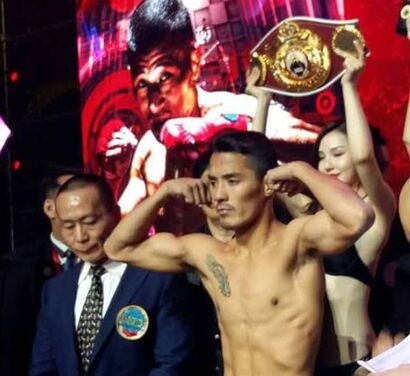
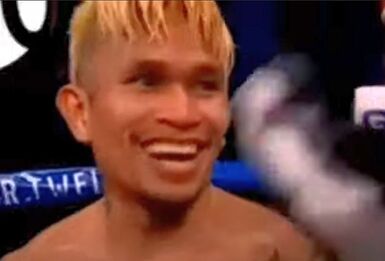
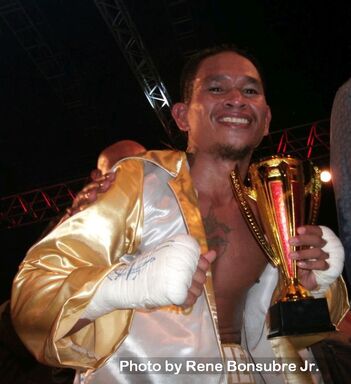
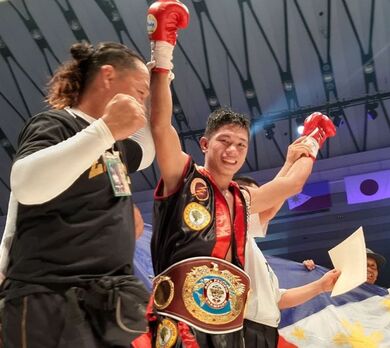
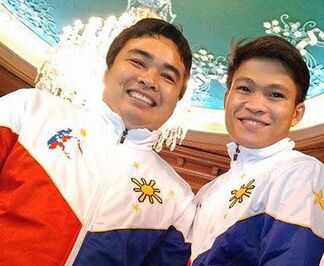
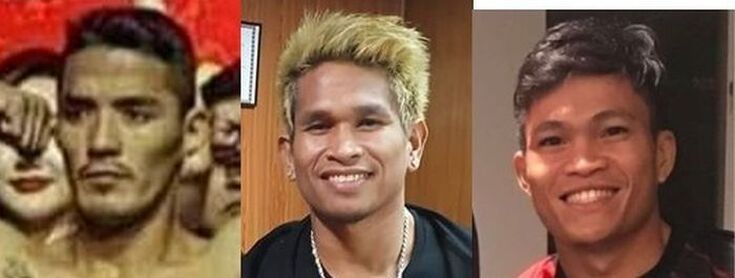
 RSS Feed
RSS Feed
